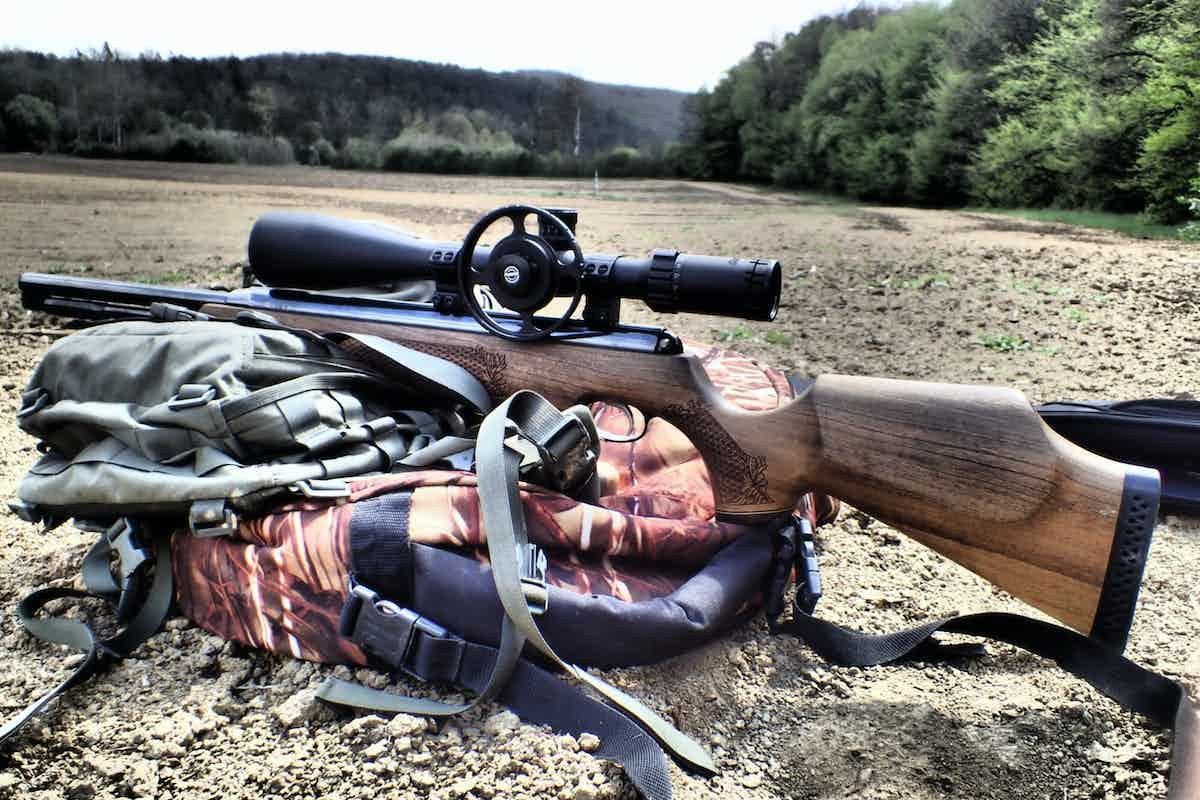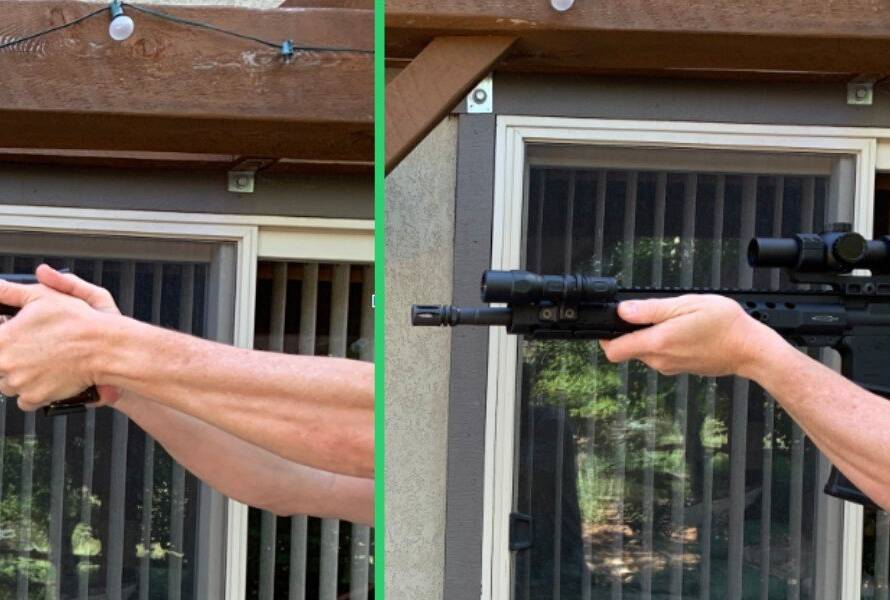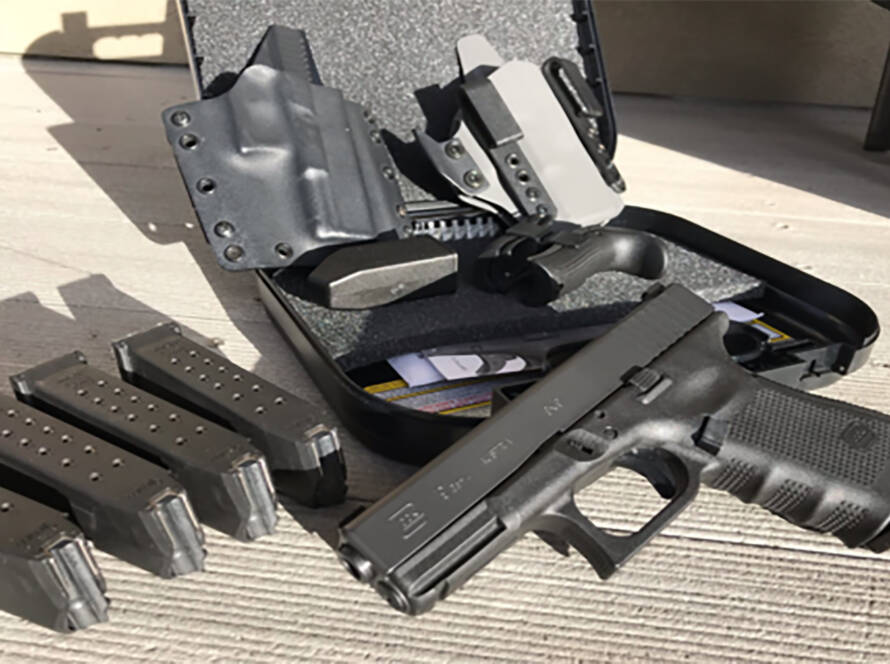With the global riflescope market predicted to grow at a compound annual growth rate of about 2.5% between 2023 and 2028, there’s an increased demand for firearm optics. This is because optics play an essential role in utilizing the accuracy and precision of firearms.
Improving accuracy and precision with firearm optics can enhance a shooter’s performance. The primary purpose of firearm optics, such as scopes and sights, is to improve your shooting accuracy. These tools allow you to aim at targets with better precision, reducing the margin of error.
If you want to upgrade your firearm optics or sell a used rifle scope, there’s a thriving market for pre-owned equipment. One popular option is to “sell used optics.” By selling your used optics, you can not only recoup some of your investment but also provide other shooters with the opportunity to purchase quality equipment at a more affordable price.
While optics can significantly improve a shooter’s precision and accuracy, they are not a substitute for proper training and practice. Here’s how you can use them in your shooting endeavors:
Choose the Right Optics
Make sure the optic you choose suits the type of shooting you’ll be doing. To extend your shooting range, you’ll need an optic with good magnification and a large objective lens to gather more light. For shorter ranges, a red dot optic or holographic sight can do.
Gaining a comprehensive understanding of your shooting requirements, budget limitations, and firearm type is crucial. Rifles and optics cater to diverse applications, including hunting, competitive shooting, tactical use, and recreational shooting. By comprehending the intended purpose of the optic, you can effectively navigate and make informed choices during the selection process.
For example, the optic’s size and weight can impact your firearm’s balance and portability. A large, heavy scope might be great for a stationary hunting setup but could burden a firearm carried over long distances.
Adopt a Proper Mounting Strategy
One tip to executing a proper mounting strategy is to ensure quality mounts are used. It is important to keep your optic securely attached and aligned properly to reduce inaccuracies. The height and the distance from the eye (eye relief) of the optic should also be considered; this way, you can improve the alignment between your eye and the reticle.
A secure mount prevents movement of the optic relative to the firearm. Even tiny shifts can throw off your point of aim, especially at longer ranges. Firmly mount the optic to reduce the chance of losing your zero setting due to recoil or other disturbances. Always use a level to ensure your firearm and the optic are perfectly horizontal before tightening down the mounting screws. Ensure the mounting hardware is secure, but be careful not to over-tighten and strip the screws or damage the optic.
Understand MOA/MRAD Adjustments
Minute of Angle (MOA) and Milliradian (MRAD or mils) are measurement units used in scopes for making adjustments. They help measure elevation (up and down) and windage (left and right). Understanding these units and how they relate to your shooting can improve accuracy and effectiveness.
One MOA is approximately equal to 1.047 inches at 100 yards, but for practical purposes, you can round it down to 1 inch. One MRAD equals 3.6 inches at 100 yards (or 1 yard at 1,000 yards). A scope with MRAD adjustments will usually move the point of impact about 3.6 inches for each ten clicks at 100 yards. Understanding this can help you quickly adjust based on your target’s distance.
MOA/MRAD measurements are crucial for shooting at long distances. Knowing how MOA/MRAD adjustments work can help you make more precise adjustments to your scope, improving accuracy at different distances.
Enhance Firearm Performance With Suppressors and Muzzle Brakes
Suppressors (commonly known as silencers) and muzzle brakes are firearm accessories that offer various benefits to improve accuracy and precision.
Suppressors are attachments that connect to the end of a firearm barrel. Their primary function is to diminish the noise and visible muzzle flash generated by firing. By slowing down and cooling the propellant gases that propel the bullet, suppressors reduce the speed and noise of the bullet’s exit.
In addition to noise reduction, suppressors and silencers can enhance accuracy and precision. They effectively decrease recoil and muzzle rise, allowing for more consistent shot placement, especially during follow-up shots. Moreover, suppressors enhance comfort and facilitate better control of the rifle.
Muzzle brakes, on the other hand, redirect gases when discharging a firearm to counteract recoil and muzzle rise. By diverting gases upward and to the sides, muzzle brakes significantly reduce the forward-directed recoil and upward movement of the muzzle. Consequently, the shooter can maintain better control of the firearm and keep the sights on target.
It’s worth noting that including a muzzle brake can impact the weight and balance of the firearm. Additionally, it may result in increased noise and blast experienced by the shooter and individuals in close proximity.
Invest in a Crisp, Precision Trigger
A precision trigger can significantly enhance the performance and accuracy of a firearm. It has a lower trigger pull weight compared to standard triggers. This way, the force required to pull the trigger and fire the weapon reduces.
Lowering the trigger pull weight can help you maintain the aim on the target without much effort resulting in more accurate shots.
Precision triggers usually have a shorter reset allowing the trigger to return to its ‘ready’ position faster after firing a shot. This allows quicker follow-up shots in competitive shooting or defensive situations.
A precision trigger is typically characterized by a cleaner and more predictable “break,” which denotes when the trigger mechanism releases and the shot is fired. This enhanced predictability enables improved shot timing and heightened accuracy. Most precision triggers have improved ergonomics with features that include a flat face or wider surface area, making the trigger more comfortable and accurate.
Sign Up for Training
Consider taking a training course specific to a particular type of shooting. It can help improve accuracy and precision when using optics like scopes, reflex sights, or red dot sights for pistols or rifles.
Firearm optics work differently and have their specific features and quirks. Training can help you understand how to adjust for certain situations, such as windage and elevation.
Shooting positions such as standing or kneeling can also affect accuracy. While training, you will understand how to maintain a stable platform in these positions. You also learn to properly hold and support a firearm and manage recoil to improve precision. Other things you can learn through training include breathing control, trigger control, situational awareness, and firearm safety.
Consider the Environmental Factors Affecting Accuracy and Precision
Wind speed, humidity, temperature, and altitude affect bullet trajectory. Learning to account for these factors can significantly improve your accuracy.
Firearm optics are subject to various environmental factors affecting their accuracy and precision. These factors can introduce error in the point of impact (where the bullet hits) compared to the point of aim (where the shooter is aiming).
Temperature
Heat and cold can cause materials to expand or contract, potentially affecting the mechanical alignment of an optic. They can also affect the air density and the muzzle velocity, both of which influences the bullet trajectory.
Humidity and Altitude
Changes in humidity can impact air density and shooting accuracy. When there’s high humidity, you may notice fogging in the optics if you don’t properly seal them.
Altitude changes can significantly impact air pressure and density. For example, if you zeroed your rifle at sea level, the point of impact may be substantially different at a higher altitude.
Wind
Wind can push a bullet off course, especially over longer distances. It is important to consider the wind speed and direction when aiming. In high-wind environments, you may need to “hold off” or aim off-target to compensate for wind drift.
Light
Different lighting conditions can affect how well you can see through the optic, influencing perceived accuracy. Some optics have features like illuminated reticles or adjustable brightness to help mitigate this.
Regularly Maintain Your Firearm Optics
Regular maintenance can help improve a firearm’s shooting accuracy and precision over time. This ensures the rifle continues to function as expected and can also extend the lifespan of the optic.
To properly maintain your firearm optic, it is essential to clean the lenses regularly. The presence of dust, dirt, or smudges can significantly impact the clarity of the image produced. To effectively clean your optics, use a technique that actually removes dust and time instead of just smearing the contaminants to the edges. By employing these cleaning methods, you can ensure that your optics remain clean and provide optimal visual performance.
Keep your optics aligned properly to improve precision, as slight shifts in alignment may develop with regular use.
Regularly inspect and maintain the mounting system that holds your optics to your firearm. Screws can loosen due to the firearm’s recoil, which can cause your optic to move and lose its stability. Regularly checking and tightening these screws can help prevent this.
The zero of a firearm optic refers to the adjustment that aligns the point of aim with the point of impact. It is crucial to regularly inspect and fine-tune your optic’s zero as part of routine maintenance. By doing so, you can ensure consistent accuracy and reliability in your shooting performance.
Buy or Sell Used Optics at RKB Armory
Mastering the use of firearm optics requires practice and a touch of training, but it’s well worth the effort. By following these simple steps, you can significantly improve your accuracy and precision when using optics.
RKB Armory is the ideal destination for buying or selling used optics. We specialize in assisting buyers and sellers in the realm of firearm accessories. Discover our wide range of offerings by visiting our shop today.





